Cincinnati Observatory Center 2016 Calendar
The Cincinnati Observatory Center is releasing its 2016 Deep Sky
Treasures Calendar feature the images of three of it members. During 2014 Fred
Calvert conducted a year long astro-imaging class . This years calendar features
the work of five of the students. The calendar is available for $15.00 from the
Cincinnati Observatory Center.
Below are the images by Fred Calvert, Cold Spring Observatory
featured in the 2016 calendar.
Links to past calendars -
(2008)
(2010)
(2012)
(2014)
(2016)
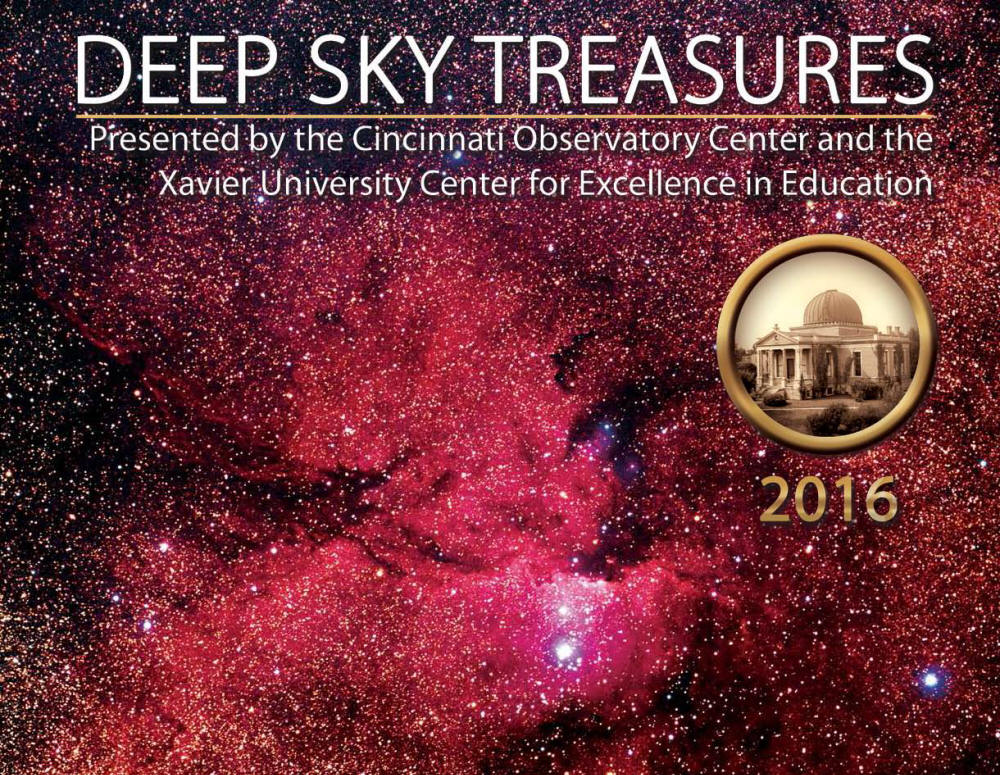
Cover Image:
NGC6188 is an emission nebula located about 4000 light years away in the
constellation Ara.
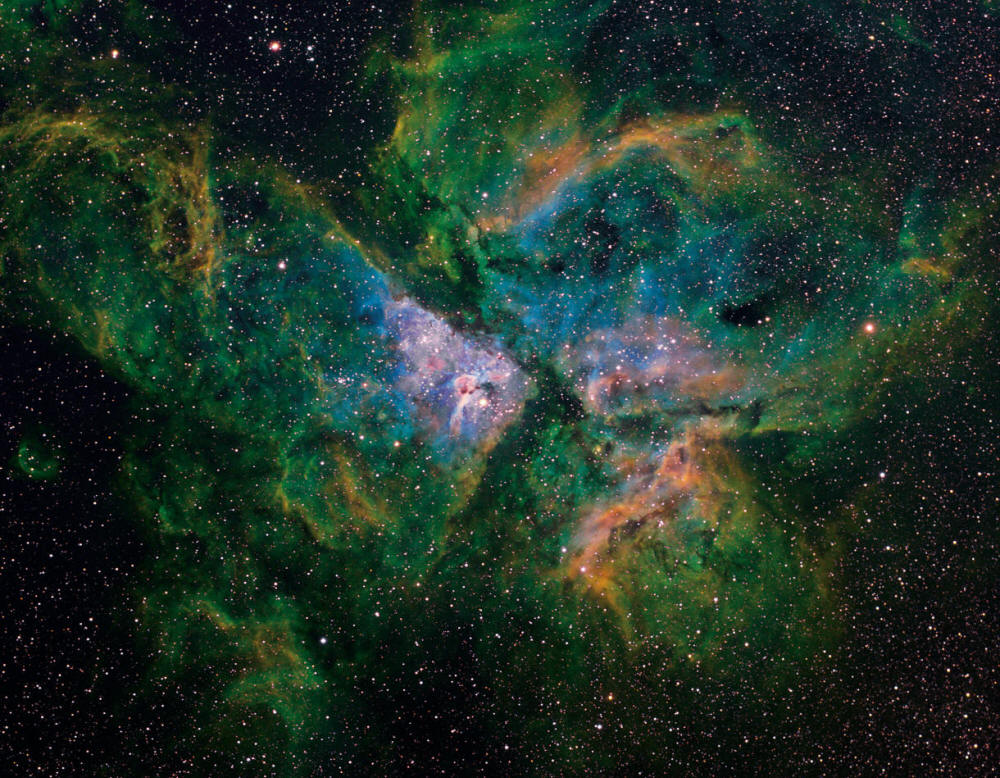
NGC 3372 Eta Carina Nebula,
Fred Calvert, Cold Spring Observatory
Eta Carina is one of the largest diffuse Nebulae, some four times the size of
the Orion Nebula and much brighter.
The nebula is estimated to be 7,500 light-years away from Earth in the
southern constellation Carina. The two most notable and well known features of
the Eta Carina Nebula are the Eta Carina Star system and the Key Hole Nebula,
both located in the yellow center section of the picture. The Eta Carina stellar
system contains at least two stars with the largest estimated to be 100 times
the mass of our sun, and a combined luminosity of over five million times that
of our sun. Because of the star's age, size and the speed that the main larger
star is losing its mass, the larger star is expected to explode as a supernova
or hypernova in the near astronomical future. Data for this image was acquired
with a Takahashi FSQ ED 106 / f/5 telescope and SBIG STL- 11000M CCD camera to
collect the narrowband data. Exposure was 1 hour each using Hydrogen Alpha, OIII
and SII narrowband filters.
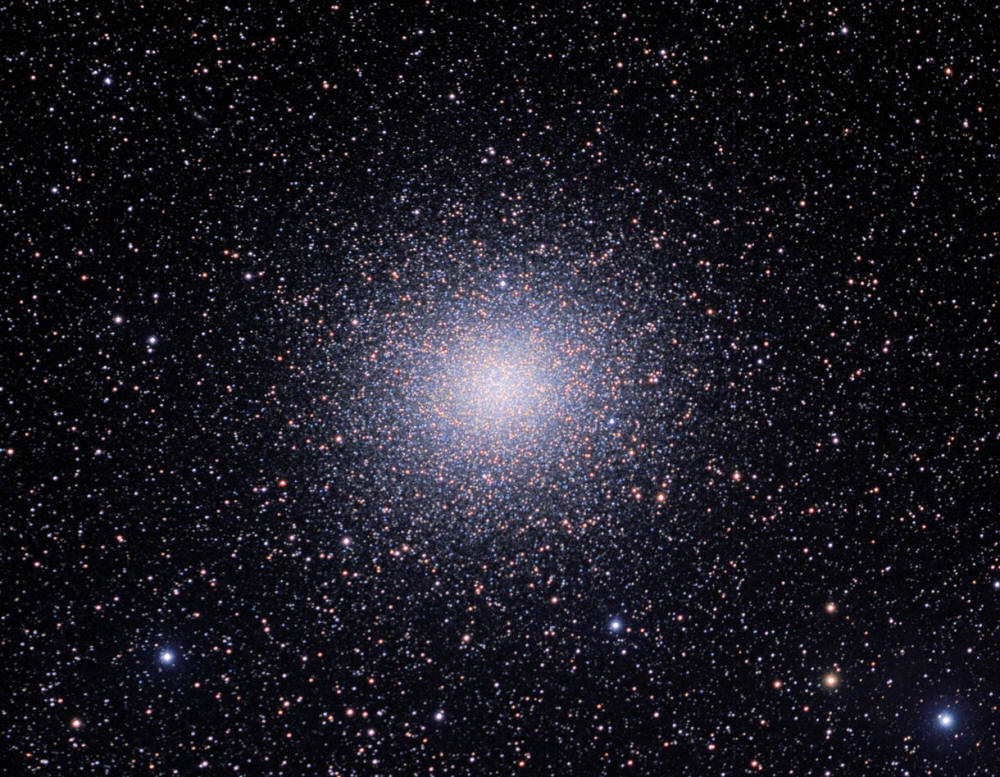
NGC 5139
Omega Centauri,
Fred Calvert, Cold Spring Observatory
Appearing
almost as large as a full moon to the naked eye, Omega Centauri is the biggest
and brightest of the 150 known
globular clusters in
the Milky Way galaxy. About 10 million stars orbit the center of the cluster
which stretches 150 light years across at a distance from Earth of about 15,000
light years. It is estimated that the stars in the core of the cluster are only
0.1 light years apart. In recent years Hubble Telescope Data indicates evidence
of an intermediate-mass black hole at the center of the cluster, suggesting that
Omega Centauri is actually the core of a failed dwarf galaxy which was disrupted
during formation and absorbed by the Milky Way galaxy. Omega Centauri has been
cataloged as many different types of object as far back as 150 A.D., but was
first recognized as a globular cluster by Scottish astronomer James Dunlop in
1826.
Data for this image was acquired with a Takahashi FSQ ED 106 / f/5 telescope,
Paramount PME mount using an SBIG STL- 11000M CCD camera to collect the LRGB
data. Exposure: Luminance 60 minutes and Red, Green and Blue 30 minutes each for
a total of 2.5 hours.
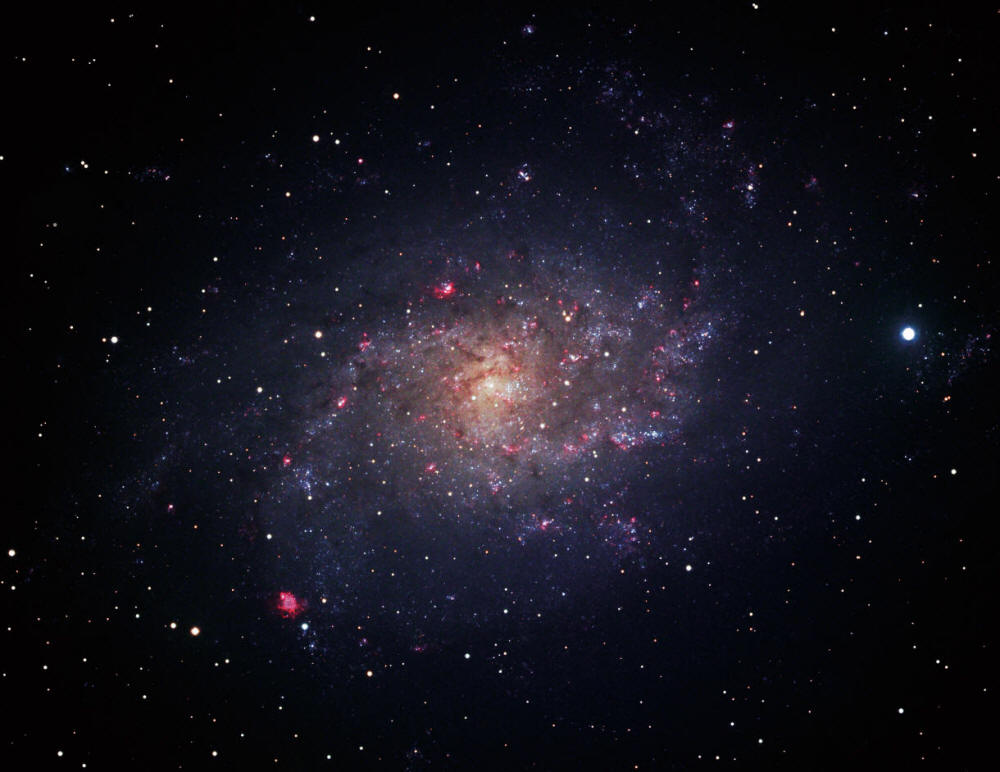
M33 Triangulum Galaxy,
Fred Calvert, Cold Spring Observatory
The Triangulum galaxy is the third largest of the local group of about 44
galaxies.
It has an estimated diameter of 60,000 light years and is composed of
an estimated 40 billion stars. The largest galaxy in the local group is the
Andromeda galaxy with an estimated diameter of 220,000 light years and 1
trillion stars. Our home the Milky Way galaxy is the second largest of the group
with an estimated diameter of 120,000 light years and 400 billion stars. The
Triangulum galaxy is thought to be gravitationally bound to the larger
Andromeda galaxy. Both are approaching our Milky Way galaxy at about 68 miles
per second and all three will collide in about 4 billion years to form a new,
larger galaxy. The galaxy was first described around 1654 by Italian astronomer
Giovanni Battista Hodierna in his written works. Charles Messier also
independently discovered the galaxy in 1764 and cataloged it as object 33; hence
the name M33.Data for this image was acquired with a Planewave 17" f/4.5
telescope and FLI-PL6303E CCD Camera. Total exposure time was 2.5 hours.
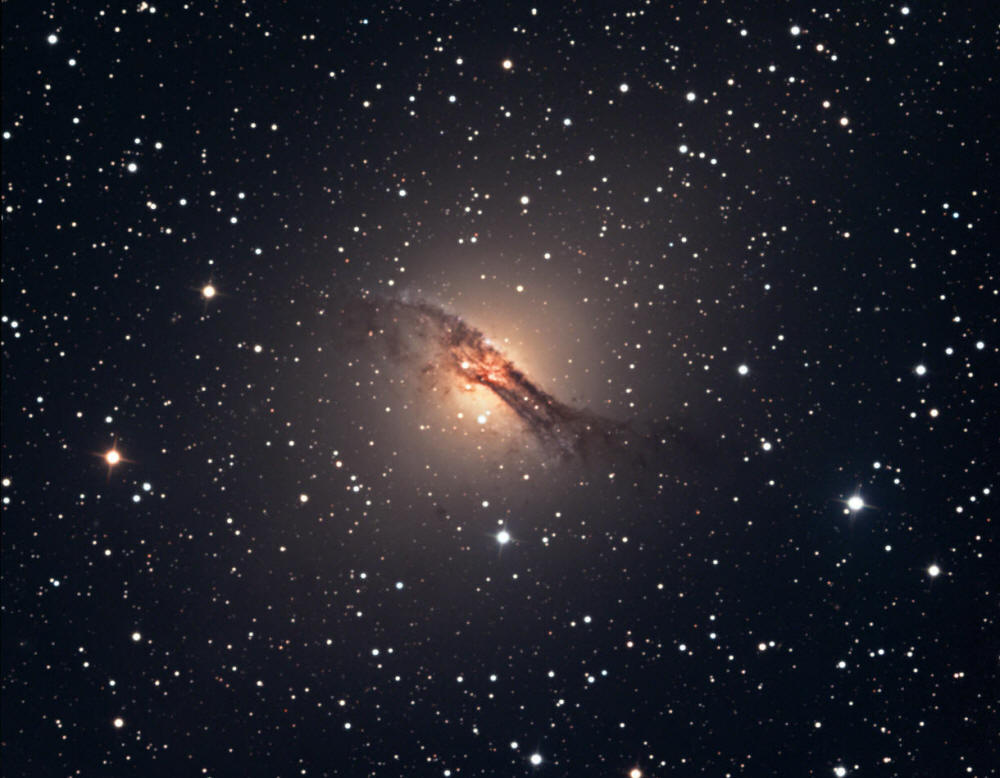
NGC 5128 Galaxy Centaurus A,
Fred Calvert, Cold Spring Observatory
One
of the closest active radio galaxies to Earth, Centaurus A contains a super
massive black hole in it center estimated to be over a billion times the mass of
our sun - the result of a elliptical galaxy merging with a smaller companion
spiral galaxy. Centaurus A is a peculiar elliptical galaxy spanning some 60,000
light years across at a distance of 11 million light years from Earth. It was
discovered by Scottish astronomer James Dunlop in 1826 from his home in New
South Wales, Australia and is located North of the Southern Cross in the
constellation Centaurus. In 2015 the European Space Agency's Very Large
Telescope in Chile observed in Centaurus A what is proposed as a new class of
star clusters call dark globular clusters because of their unusually high mass
and dark matter components when
compared to the amount of stars in the cluster. Normal globular star
clusters are normally considered to be almost devoid of dark matter. Data for
this image was collected using a Planewave 27" f/6.6 telescope and FLI PL 09000
CCD camera. Exposure times were 45 minutes Luminous and 15 minutes each for Red,
Green and Blue.
Back Cold Spring Observatory Main Page





